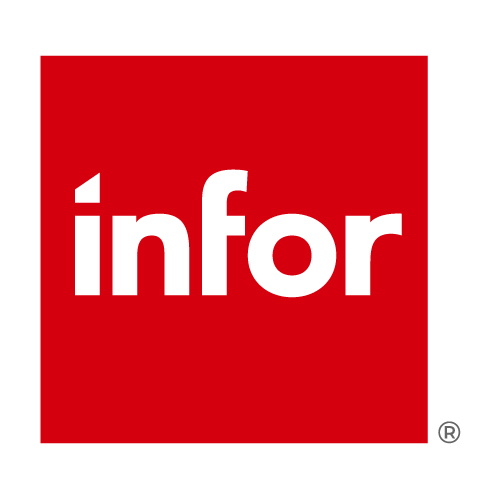
Whatever your industry, adopting cloud technology is now an inevitable part of doing business. While data collection and cross-border collaboration are important across sectors, fashion brands arguably have even more reason to embrace new technology than most.

A complex, globalised sector – encompassing thousands of suppliers and a full 12.6% of the world’s workforce – even the most dedicated brands find it difficult to understand pain points or sharpen supply chains without a holistic understanding of their data.
More than that, many of the biggest fashion companies have yet to fully appreciate the immense potential of the cloud, even as a failure to keep up carries serious risks – not least in an industry that, according to Euromonitor, grew at almost 20% in the year through 2021. By securing the right partners, industry experts who make cloud adoption easy, even long-established brands can soon use the cloud to bolster their business in meaningful ways.
Slow technology adoption rates in fashion
Helene Behrenfeldt is well placed to reflect on the evolving relationship between fashion and the cloud. An industry veteran of 15 years, she serves as the fashion strategy director at Infor, a global leader in business cloud software. And, as Behrenfeldt says, many companies have found it challenging to translate their fashion knowledge into more practical areas like data analysis and supply chain management.
“If you look at well-known fashion brands, the market and consumer demands have shifted significantly, putting pressure on them to react and change fast,” Behrenfeldt explains. “Some brands have performed well year over year, but now, when things are changing fast, there is a need to rethink and react to meet new requirements.”
It goes without saying, Behrenfeldt continues, that the new situation can leave fashion houses oblivious to reams of valuable data, with information on everything from supply chains to ESG to be able to fully transparent. This can spark more direct problems too: according to Cloud Awards, an estimated 20% of apparel’s manufacturing time is lost because staff have to hunt through isolated spreadsheets for product information.
And though larger, mid-market brands may be slightly more comfortable with cloud-based solutions, Behrenfeldt suggests that worries around cybersecurity and high transaction volumes have typically prevented some from taking the plunge. This point is certainly supported by the numbers. According to a recent report by Just Style, for instance, cloud hirings in fashion were lower than across industry as a whole, while work by McKinsey has found that in 2021 apparel brands invested less than 2% of their revenues in technology.
And if the business advantages of the cloud remain undiminished, Behrenfeldt stresses that the experience of Covid offers yet another reason to abandon legacy servers. “There was no choice,” is how she characterises fashion’s position during the pandemic. “Everyone had to work more digitally.” Further, Behrenfeldt suggests that the cloud can offer wins for consumers too, with integrated platforms allowing better transparency of the product itself – it can help consumers make better decisions to extend the life cycle of the products (such as repair, recycle, or resell).
A range of benefits
With all these factors at play, it should come as no surprise that many fashion brands are rapidly adopting the latest cloud technology, with McKinsey suggesting that fashion’s investment in new technology will increase by half through the end of the decade.
Naturally, an initial decision is only half the story here. Without a dedicated partner to develop a successful cloud infrastructure, even the most enthusiastic brand will struggle to get much out of its new platform. Infor, for its part, has robust experience here, working with brands like Burton and Portwest, among other distinguished apparel firms.
More to the point, Behrenfeldt is keen to emphasise the practical strengths of hosting a company’s global data in a single virtual hub, arguing that something as simple as managing transactions can be done much faster when managers aren’t opening dozens of Excel spreadsheets, or else chasing their hundreds of suppliers for relevant data.
The same is true, Behrenfeldt says, when it comes to managing a brand’s inventory to avoid waste, a particular concern in fashion given clothes can vary hugely in demand by size, colour and style. “That’s only possible,” she summarises, “with proper technology at the bottom.”
More specifically, a comprehensive ERP like Infor’s offers a range of specific data-management tools. Consider, for instance, the ability to quickly create KPIs, which can then be analysed to take better decisions. Just as valuable is how they can promote communication on the move, allowing staff in distant factories to sign in immediately and collaborate remotely. That’s particularly beneficial, of course, considering fashion is such a high-volume business – one where improving speed to market is often the highest priority.
Together with Infor’s ability to help advise on regulatory standards – ensuring suppliers and manufacturers across the world can meet the need to transparently achieve ESG obligations – it makes sense that Behrenfeldt should describe fashion’s cloud revolution as offering substantial benefits to whoever makes the jump.
And for legacy brands concerned that sophisticated new technology risks are over-burdening their IT teams? Platforms like Infor’s offer plenty of assurance. Updates are installed automatically, keeping brands safe from hackers and staff are left to focus on business development.
Usability is a hallmark of the Infor solution in other ways too, notably in how staff can get access to personalised, actionable reports on inventory levels, sales by channel and price competitiveness, among other vital metrics. If nothing else, the versatility of modern ERPs can be seen in their ubiquity. Infor has partnered with Amazon Web Services (AWS) to offer its Infor CloudSuites across more than 20 AWS regions and 61 availability zones around the globe.
Given everything Infor is offering fashion brands of all stripes, expect those numbers to rise over the years ahead.








